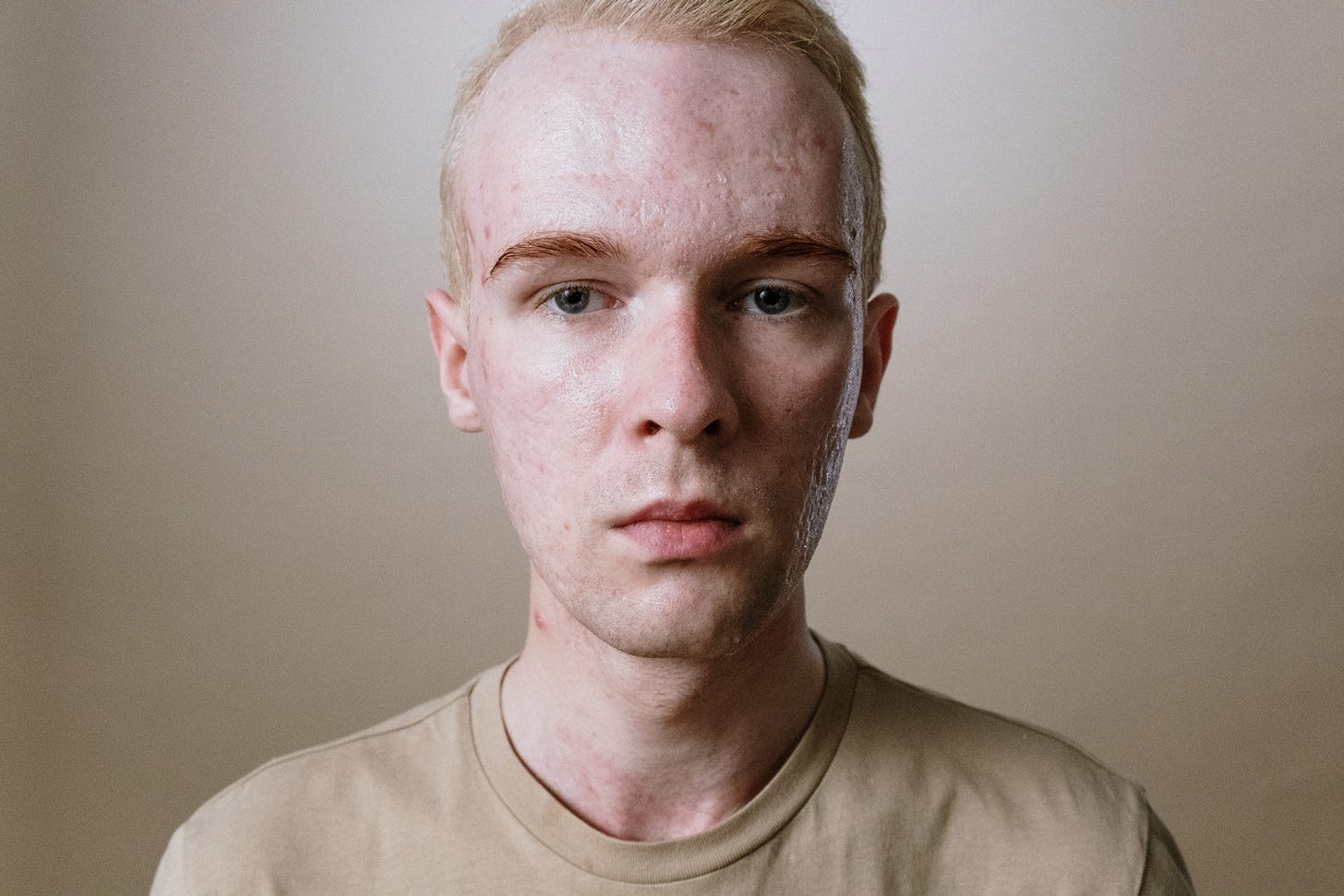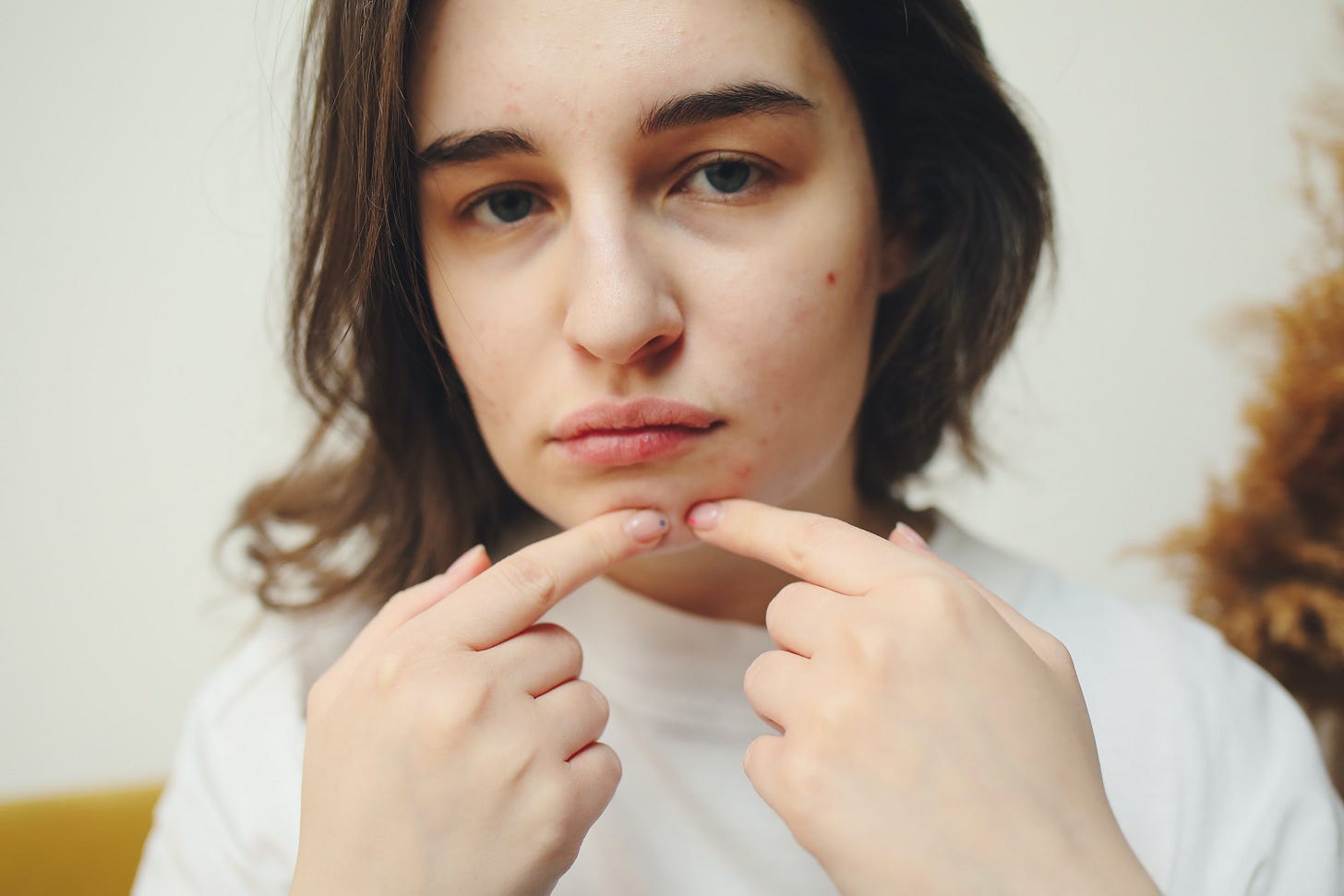Twice-daily topical clascoterone safe, effective in ages 12 and older
Today's report also covers rare anal fissures with isotretinoin, combination carbon lotion and Nd:YAG laser, better scar outcomes, and more (1,300 words, 6 minutes, 50 seconds)
The Focus on Acne e-newsletter is supported by an unrestricted grant from Sun Pharma Canada
Good morning and welcome to the fourth issue of Focus on Acne presented by Skin Spectrum Weekly. This series provides up-to-date information on developing therapies and trends in acne treatment. We appreciate your feedback and suggestions and invite you to be in touch. Please write to us at health@chronicle.org
Twice-daily topical clascoterone safe, effective in ages 12 and older
Findings from an open-label, long-term extension study show topical clascoterone cream 1% maintained a favourable safety and efficacy profile for up to 12 months in patients aged 12 years or older.
The paper was published in the Journal of Drugs in Dermatology (Aug. 1, 2023; 22(8):810-816).
The authors note that of 600 patients initially enrolled, 343 completed the extension study (177 treated with clascoterone cream 1%, twice daily for nine months, 166 vehicle controls). Participants applied cream to their entire face and, if desired by the patient or an investigator, to truncal acne. Any participant who achieved an Investigator’s Global Assessment (IGA) score of clear or almost clear (IGA 0 or 1) had the option to stop treatment and resume if or when their acne worsened.
During the study, there were 187 treatment-related adverse events in 108 of 598 clascoterone-treated patients (18.1%), including 56 of 311 (18.0%) and 52 of 287 (18.1%) patients originally randomized to clascoterone and vehicle, respectively. The most common local skin reactions were erythema and scaling or dryness. The percentage of patients who completed treatment per protocol with facial and truncal IGA scores of 0/1 increased to 48.9% (156/319) and 52.4% (65/124), respectively, at the study end.
Patients should be aware of rare anal fissures with isotretinoin therapy
Adverse events related to the anal mucosa are uncommon in the treatment of acne with systemic isotretinoin, but educating patients about the possibility can encourage them to be more cautious and increase their tolerance to treatment.
These are the conclusions of a paper published in Dermatology Practical & Conceptual (July 1, 2023; -13(3):e2023133)
The authors explain their goal with this study was to evaluate the incidence of anal fissures with clinical and laboratory side effects associated with isotretinoin.
Researchers included a total of 210 patients who received systemic isotretinoin treatment. Patients with constipation and anal bleeding were evaluated by a general surgery clinic to arrange appropriate treatments.
Of the patients included in the study, 138 (65.7%) were female and 72 (34.3%) were male, with a mean age of 23.7 years. The most common adverse event was dry lips in 206 (98.1%) patients. The mucocutaneous side effects were constipation in 36 patients (17.1%), anal bleeding in 18 (8.6%), mucosal erosion in 10 (4.7%), and anal fissure in seven patients (3.3%). Five patients discontinued treatment due to elevated liver function tests and one patient discontinued it because anal bleeding could not be controlled.

Combination carbon lotion and Nd:YAG laser for acne Tx
Findings from a small case series suggest that a combination of a topical carbon solution and treatment with a Q-switched Nd:YAG laser can be an effective acne treatment that is easy to perform, quick, and results in minimal downtime for the patient.
This case series was published in the Journal of Cutaneous and Aesthetic Surgery (April-June 2023; 16(2):145–146).
The authors of the paper note there has been a growing interest in combination therapy as a way of improving skin quality in patients with acne. However, they write there is a rationale for using this combination of carbon lotion and laser to treat bacterial colonization of the facial pores associated with acne.
“An evolving understanding of laser-tissue interactions involving gram-positive Cutibacterium acnes-produced porphyrins, and the development of infrared nonablative lasers to target sebaceous glands, has led to the development of an escalating number of laser, light and radiofrequency devices for acne,” they write.
For these 20 patients, researchers applied a carbon lotion to the face for 20 minutes, followed by four laser passes. The first pass involves a quasi-long pulse (300 μs) low fluence (1.2–1.6 J/cm2) 1,064 nm Q-Switched Nd:YAG laser with an 8 mm spot size. For the second pass, the laser’s Q-switched mode is used with a 5 ns pulse. Then two additional passes are done for laser toning (1,064 Q-switched 5 ns pulse Nd:YAG low fluence of 1.2 J/cm2).
The carbon solution accumulates in the pores of the skin and acts as a thermal enhancer to stimulate the epidermis and to destroy C. acnes, the authors write.
In their report of the 20 cases, the researchers note the duration of the procedure was less than 30 minutes in each case, and patients experienced no bleeding, crusting, or scabbing. Patients also had minimal downtime with no post-inflammatory hyperpigmentation.
“Randomized control trials are needed to validate this as a modality of choice,” the authors note.

Better scar outcomes with concurrent ablative CO2 laser and isotretinoin
New findings suggest concurrent treatment with isotretinoin and fractional ablative CO2 laser (FACL) results in better acne scar outcomes than delaying FACL treatment for six months after cessation of isotretinoin treatment.
In the study, published online in Lasers in Surgery and Medicine (Aug. 9, 2023), the authors note the therapeutic dogma has been to treat acne scars with ablative fractional laser no less than six months after isotretinoin cessation.
To evaluate the safety and efficacy of combining both treatments, researchers conducted a prospective split-face randomized control trial in patients.
Patients received three monthly sessions of FACL with concurrent isotretinoin treatment on half of the face; the other side of the face received the same FACL treatment regimen six months after the end of their isotretinoin treatment. The patients were followed for adverse effects up to six months post-FACL treatment.
Three independent dermatologists scored final cosmesis using the Quantitative Global Acne Scarring Grading System (GASGS).
Overall, the investigators found that the GASGS scores of the sides of the participants’ faces treated with the concurrent approach were significantly lower than the side treated with the delayed laser therapy.
Subscribe to The Chronicle of Skin & Allergy
Established in 1995, The Chronicle of Skin & Allergy is a scientific newspaper providing news and information on practical therapeutics and clinical progress in dermatologic medicine.
To apply for a complimentary* subscription, please email health@chronicle.org with your contact information or click the link below.
If you find the contents of this newsletter interesting, please check out the Yadav on Acne podcast. It’s available at Apple iTunes, Stitcher, Spotify, or wherever you get your podcasts.








